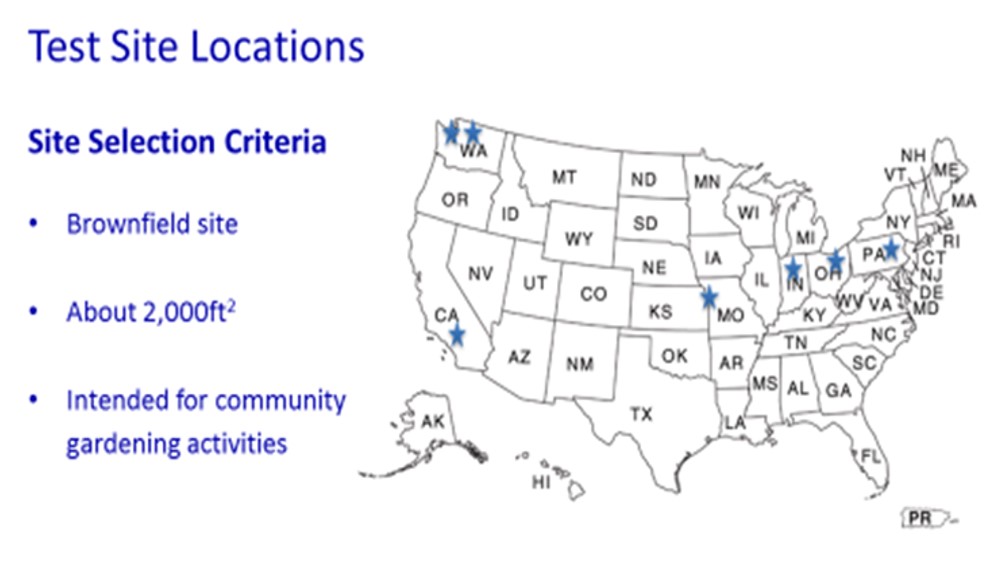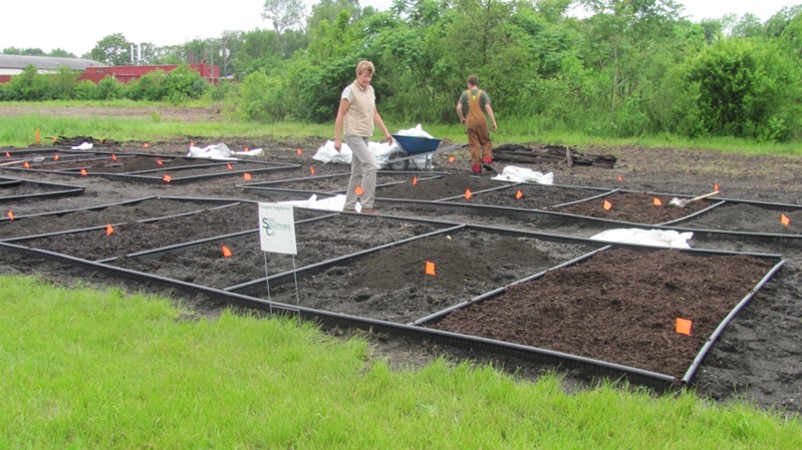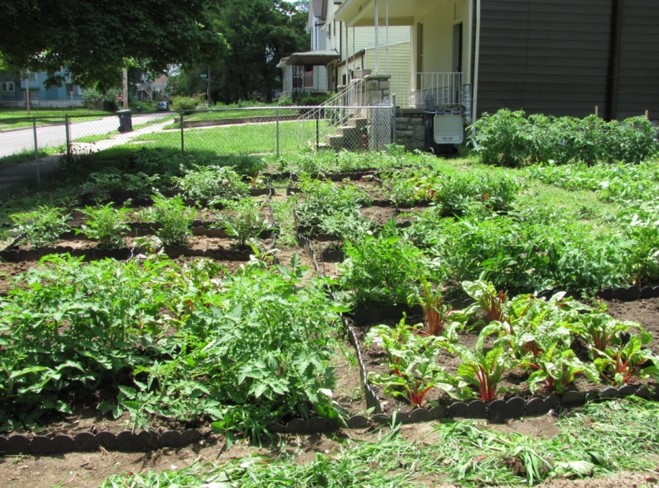Our Project
The Department of Agronomy , the Center for Hazardous Substance Research and the Department of Horticulture, Forestry and Recreation Resources at Kansas State University partnered on an EPA K-6 grant (TR-83416101-1) to evaluate the uptake of metals and metalloids into food crops grown on mildly contaminated brownfield sites slated for community gardens. The goals of this project were as follows:
- to identify and quantify potential human exposure to soil contaminants through direct soil ingestion and indirect food-chain transfer and to educate community gardeners on how to safely grow crops on brownfield sites by implementing BMPs (Best Management Practices);
- to enhance the capabilities of gardening initiatives to produce crops locally without potentially adverse health effects to the grower or the end consumer;
- and to contribute to the meaningful revitalization of brownfield sites in a sustainable manner.
As funding permitted, training (workshops, seminars) and technical assistance was provided to participating organizations planning to establish a community garden on a brownfield site, and communities and organizations interested in urban gardening topics.
Test plots were established on select brownfield sites in 6 states across the U.S. and three vegetable crop types with three very different growth and contaminant uptake patterns (root crops, leafy crops and fruiting crops) were planted over at least two consecutive growing seasons. Soils and produce were analyzed throughout. Recommendations for garden bed preparation and corrective/protective actions to address present contaminants were developed.

The process was as follows:
- Establish site history
- Field-screen for metals and metalloids and collect soil samples
- Test soil for contaminants and agronomic parameters
- Develop best management practices (for examples, adding soil amendments, raised beds)
- Continuous monitoring, soil and produce sampling and testing over at least 2 growing seasons
- Training and technical assistance to participating organizations on topics such as sample collection, site evaluation, BMPs, etc. throughout the project
For technical questions, please see our project personnel contact information.

